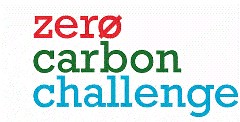Five finalists have been named to compete to create the best design for a zero-carbon house in Adelaide.
The Land Management Corporation is holding the competition at its ‘green village’, Lochiel Park, at Campbelltown.
The challenge is to design a sustainable three bedroom home for a maximum cost of $300,000.
The winning design will be built on Lot 61 at Lochiel Park, the objective to represent a showcase an industry benchmark of energy-efficient, environmental standards.
The Zero Carbon Challenge, launched in June 2011 by LMC and the State Government’s Integrated Design Commission (IDC), aims to encourage industry to be innovative in designing and constructing a home with minimal environmental impact over its projected lifetime of about 50 years.
 Land Management Corporation chief executive Wayne Gibbings said the Zero Carbon Challenge had drawn a strong response from the architecture, development and construction sectors.
Land Management Corporation chief executive Wayne Gibbings said the Zero Carbon Challenge had drawn a strong response from the architecture, development and construction sectors.
“The number of submissions and the strength of the individual teams are outstanding,” Gibbings said.
South Australian Government Architect Benjamin Hewett said the design phase would create the opportunity to push the limits on the latest techniques in sustainable and affordable building and congratulated IDC and LMC on staging the competition.
"This is an important initiative that recognises opportunities of collaboration across skills and disciplines to achieve best-practice outcomes," Hewett said.
The State’s Infrastructure Minister Patrick Conlon said: “The winning team will be faced with providing a house which minimises embodied and operating energy, and the lessons learned along the way will provide valuable insight into improving the affordability and environmental credentials of Adelaide homes well into the future.
“It is exciting for us as a State Government that one of these innovative designs will eventually be built at Lochiel Park, which will enhance the development’s position as being a leader in sustainable housing in South Australia.”
Existing homes in Lochiel Park are all fitted with photovoltaic solar cells and, in addition to normal utilities, serviced by a non-potable water system.
The Zero Carbon Challenge organisers expect the competition will push the boundaries of established construction practice.
The finalist teams — each as a minimum made up of architects, licensed builders and a student — include the following members:
Team VIM: Buzz Architecture; Scholz Vinall Design; Scott Salisbury Group / AREA Construction; JDR#1; and Connor Holmes; Exhibition studios; Dr Terry Williamson — Adelaide University; Jonathan Muecke; Vanessa Menadue; and Lyrian Daniel.
Collaborative Future: Cundall; TS4 Architecture; Holdfast Construction; Eco Active; Urban Sustainable Landscapes; MLEI; WT Partnership; Acdev; Ken Long; and Brock Urban Projects.
Energy Aspect Living: Energy Aspect Living; Bateup Urban Design; Alex Heath; RCI Consulting Engineers; and Bateup Visual Graphics.
Sekisui House Services SA: All required expertise from in-house.
Swanbury Penglase: Swanbury Penglase; Arup; Stephen Robert Berry; Rossdale Homes; and UniSA’s Dr Frank Bruno.
The finalists will be offered $10,000 to help cover the cost of preparing their final design / documentation.
The next stage of the competition, to be conducted through September and early October, will involve the five teams taking their initial concepts through to detailed design, costing and calculation of embodied and operating energy.
The winning team will also be required to work with a carbon verification consultant to assess their design in accordance with the Federal Government’s national carbon offset standard.
This will independently verify the carbon performance of the house over its projected life.
This verification will then be submitted to the Federal Government for certification.
For further information about the Zero Carbon Challenge go to
www.lmc.sa.gov.au/zerocarbonchallenge or www.facebook.com/zerocarbonchallenge.
The Integrated Design Commission SA has a broad remit in all matters relating to multi-disciplinary design and the built environment, including planning, infrastructure, transport and energy, urban ecology and landscape; and industrial and product design.

